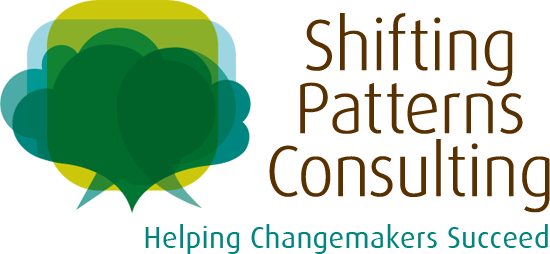“Go slow to move fast.” Depending on your perspective this saying could mean a variety of things, such as: rushing can result in missed opportunities and mistakes, our productivity and efficiency increase as our skills develop, or resistance is less likely to be encountered later on if we take the time to get people on board. If you’re like me, and have dedicated your career to bringing about positive change, then perhaps all of these meanings resonate.
As a facilitator of collaborative action, I’ve confronted a tension between the urgency to act and a desire for shared understanding and collective support prior to taking action. This tension is aptly described in a Stanford Social Innovation Review article as “patient urgency.” This is about balancing demands to “go slow” (understand the context of the challenge to be addressed and build community support to sustain change over the longer-term) and “go fast” (address problems that require an urgent response and sustain momentum to move forward). In my own work helping changemaker leaders navigate this tension, I’ve wondered how to satisfy these seemingly conflicting demands.
One experience involved facilitating a meeting for changemaker leaders about building a stronger local economy where consumers are incentivized to purchase more of their goods and services from local businesses. In “taking the pulse” of the participants towards the end of the initial gathering it was clear that there was a divergence in the room between those who favored better understanding the problem and those who were ready to develop a prototype and pivot as needed. Both opinions have their merits, so which path do we take?
The “Build a Shared Understanding” Path to Collaboration
Collaborative action requires not only understanding where we’ve been, but collectively deciding where we want to go. For people who are context-oriented, collaboration begins with developing a shared understanding of the problem or issue to be addressed. This involves discovering the root causes of the problem and how these underlying issues are interconnected. Equally important is finding out who is already working on this issue and identifying gaps that can be addressed. This information can help us clarify our purpose and the scope of collaborative efforts, which can be used to develop a purpose statement to enlist the support of others who care about this issue. The upside of this approach is gaining clarity about where the group can have the greatest impact and knowing where and how to take action. The downside is that if too much time is spent collecting and analyzing information critical decisions are not made resulting in analysis paralysis, which can lead to ineffectiveness, loss of motivation, and disengagement.
The “Learn by Doing” Path to Collaboration
For those who are action-oriented, collaboration begins with identifying opportunities to work together to address a common challenge. Developed by Purdue’s Center for Regional Development, Strategic Doing is an approach to collaboration where groups evaluate and prioritize opportunities to work together, begin taking action steps, and re-convene to determine what worked and make adjustments as needed. Similar to rapid prototyping, strategic doing enables groups to transition to collaborative action in a matter of hours. The advantage of this process is that after one session, groups come away with an action plan that they can begin implementing. A potential downside is that if insufficient attention is given early on to building relationships grounded in trust and establishing an effective process for working together, collaborative efforts can begin to unravel.
Choosing a Path Forward
Just as there are different types of collaborations there are different ways of working together to achieve social impact. So, how can we satisfy collaborators who are context- and action-oriented?
Here are some tips for navigating the “patient urgency” tension:
1) Take the “temperature of the room.” This is about obtaining feedback from the people you’re collaborating with. There are a variety of ways to solicit input. Some of the most common methods are polls (a response to a single, simple question) surveys (responses to multiple questions), interviews (exploration of a topic that allows for follow-up and clarifying questions), and focus groups (an interview with a group of people). It should be noted that obtaining feedback is not a “one and done” that takes place at the beginning of a collaboration. It’s important to have access to accurate and up-to-date information about the quality and progress of collective efforts all the way through.
2) Allow for engagement that is varied and coordinated. Flexibility is an inherent part of collaboration, particularly as participants’ interests, desired involvement, and benefits received are likely to vary over time. One approach is to identify the assets (e.g., knowledge, skills, relationships, technology, and funds) participants are willing to contribute to the collaboration and match them to the support that is needed. Equally important is putting tools, like a team charter, and a process, such as regular check-ins, in place to clarify participants’ roles and how the group will work together.
3) Maintain regular communication. Critical to successful collaboration is keeping everyone informed and up-to-date throughout the entire process. A consistent and regular flow of information enables people who are working together to know what others are doing. At the same time, those who are waiting for the right opportunity to participate are kept in the loop about what is going on. Being regularly kept informed about collaborative efforts can help sustain interest over the longer-term as well as offer opportunities to celebrate milestones achieved along the way.
Moving at the speed of social change is ultimately about recognizing that, like these tips, the work of collaboration is inter-related and non-linear. Successfully working together requires acknowledging and addressing the tension that can exist among participants who have different ideas about what constitutes an appropriate pace. Perhaps what it really comes down to isn’t selecting the right path, but agreeing upon the destination and keeping everyone focused on getting there.
This post was published by SEE Change Magazine on December 5, 2016.



















